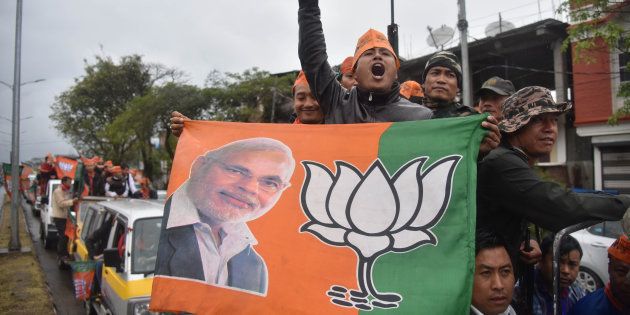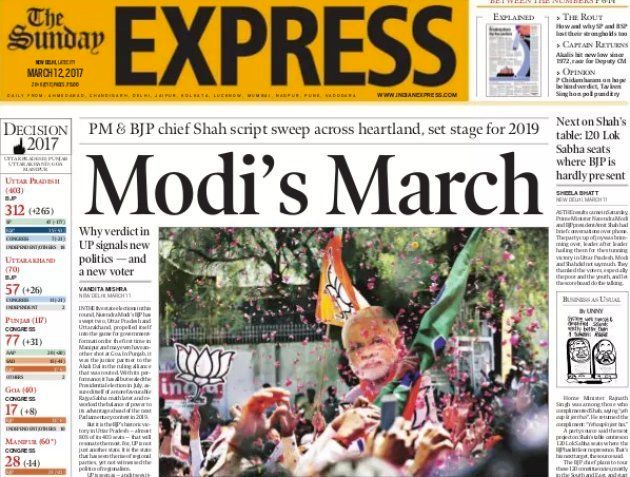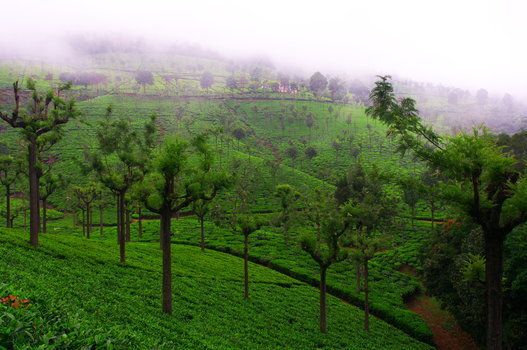
The BJP decimated every other political party in Uttar Pradesh and bagged a whopping 312 seats in the state. And the front-pages of most newspapers today echoed exactly the same sentiment.




Modi, according to most editorials and political commentators, is responsible for BJP's clean sweep in the state. BJP taking the state is particularly interesting as the elections were held after the government's demonetisation move which hit the civilians hard and had been criticised by several media outlets for being great on intent but sloppy in execution.
Vandita Mishra writes in The Indian Express, "Now the Modi-Amit Shah BJP's sweep confirms that what UP is seeing is a new phase of politics that builds on Mandal and Mandir but cannot be fully explained by them. And that under Modi and his trusted lieutenant, the BJP is adapting to it most deftly and successfully — it is setting the agenda, certainly, but, more than that, it is becoming what the people want it to be."
Mishra points out how Modi also managed to draw the Uttar Pradesh voter's attention to issues other than those exclusively the state's. Like he did in 2014, Modi managed to project himself and the party as beacons of all-round development -- something an increasingly aspirational electorate, with and seeking access to new technologies, finds both appealing and convincing. According to the article, the BJP was also successful is selling the narrative that demonetisation was a bold first step in the direction of ending economic inequalities in the country.

Mishra's analysis reveals that the BJP had a finger in each electoral pie -- caste, religion, development. "It also, and as before, bid for Hindu consolidation — just like in 2014, it did not give a single ticket to Muslims. It allowed free play to those like Yogi Adityanath, and especially to him (the MP from Gorakhpur, most known for his talk of "anti-romeo squads" and "love jihad" and for working up a state of permanent religious polarisation in his bastion in eastern UP, addressed many more rallies for his party across the state than in any previous election), party president Amit Shah labelled his rivals KASAB and promised to shut down all slaughter houses and Modi himself spoke of 'kabristan' vs 'shamshan'," she writes.
In another article on The Indian Express, titled, "Modi Plus Mandal Plus Kamandal Plus", Sheela Bhatt writes: "For decades, the BJP in the state was described as the Brahmin-Baniya-Rajput party. The upper class represented its core voters. This election, Shah had to change that image. The party had to be connected directly and forcefully, more so after demonetisation, with the "poor class". And for that, he had to reach out to non-Jatav Dalits and non-Yadav OBCs. These 38 caste blocs, with more than 200 groups under them, comprised largely of the poor, landless labour class."
"For decades, BJP in UP was described as the Brahmin-Baniya-Rajput party. The upper class represented its core voters. But in this election, Amit Shah had to change that image."Sheela Bhatt, The Indian Express
Calling it Narendra Modi's "Indira Gandhi moment", an editorial on The Times Of India said, "In 2014, Modi had humbled Mandal parties that had so often cocked a snook at BJP, using his oratorial skills to good effect to present himself as a change agent who, despite his Gujarati origins, seemed at home in the heartland."
Explaining the Indira Gandhi connection, it added: "After transforming from the Hindu Hriday Samrat of Gujarat to Development Man in 2014, UP 2017 saw Modi again re-invent himself as a pro-poor welfarist. In the Indira Gandhi style, Modi in UP was the PM seeking to win a state election on the basis on his own persona, not through state leaders."
Another editorial titled 'Hard Knocks in Bihar Shaped BJP's UP Strategy', TOI pointed out that following the drubbing in the Bihar Elections in 2015, the party learnt some hard lessons and stopped itself from repeating the mistakes. "This time round the BJP avoided the pitfalls of strident election rhetoric and steered clear of self-goals like RSS chief Mohan Bhagwat's comments on quotas," Akhilesh Singh writes.

Writing for The Telegraph, Manini Chatterjee says that Modi's new-found pro-poor 'saffron Santa Claus' avatar couldn't have pulled off this victory alone. "A combination of factors that included a meticulously crafted caste arithmetic in ticket distribution, a far from subtle communal polarisation campaign, a division of anti-BJP votes among the SP-Congress alliance and the BSP, tremendous hard work put in by the Shah-led army of party workers for several months before the elections, and a helpful media that amplified the BJP's message across the state also helped the party achieve its unprecedented win," Chatterjee writes. She also added that the BJP indulged in a 'below-the-radar communal polarisation' where they didn't give a single ticket to Muslims, making it clear that they had to intention to go out of their way to appease minorities. The Samajwadi Party has traditionally been seen as doing exactly that -- appease minorities with sops.
Chatterjee writes: "With Modi himself bringing in the "kabristan" versus "smashaan", and "Ramazan" versus "Diwali" motif into the election discourse, it was open licence to the party's local leaders to be more explicit in their campaign against 'Muslim appeasement'."
"With Modi himself bringing in the kabristan vs smashaan, and Ramazan versus Diwali motif into the election discourse, it was open licence to the party's local leaders to be more explicit in their campaign against Muslim appeasement."Manini Chatterjee, The Telegraph
The Hindu also commented that the BJP rode the 'Modi wave' to claim victories not just in Uttar Pradesh, but in Goa and Uttarakhand as well. "The Prime Minister's personal investment in the seven-phase elections in U.P., during which he addressed 23 public meetings, brought rich dividends to the BJP that had won just 47 seats in the 2012 Assembly elections. The results were a virtual repeat of the BJP's 2014 Lok Sabha performance, where the party had won as many as 71 seats," The Hindu states.
Akhilesh Yadav had also embraced the development agenda as this year's poll pitch. As Sharat Pradhan writes in Hindustan Times, he actually had developmental achievements to flaunt -- "the six-lane 301-km-long Lucknow-Agra access-controlled expressway, the Lucknow metro-rail, the IT city as well as the state's first world-class cricket stadium".

Yet, it was Modi's battle cry which seems to have resonated with Uttar Pradesh. "Team Modi's well-orchestrated campaign to dismiss Akhilesh's "achievements" as "half-baked","incomplete" and "half- done" turned louder in the face of the chief minister's oft repeated 'development' pronouncements, supported by a sustained high profile, multi-billion advertising campaign," Pradhan writes. He also points out that Akhilesh's development work was more appealing to the urban voter and was Lucknow-centric. During his campaign, he failed to convince voters that his work would extend to people outside the cities as well. BJP cashed in on this by convincing rural, poor voters that Akhilesh's development plans only caters to a group of rich, privileged city-dwellers.
Also On HuffPost:
